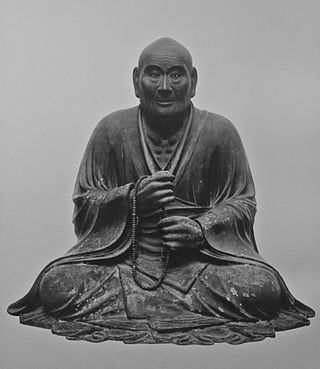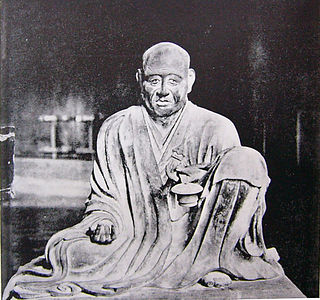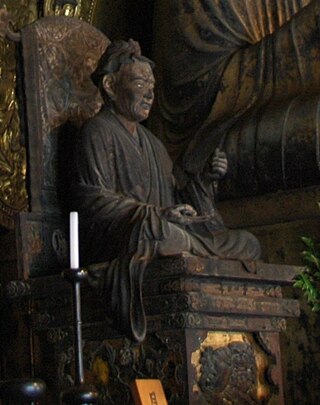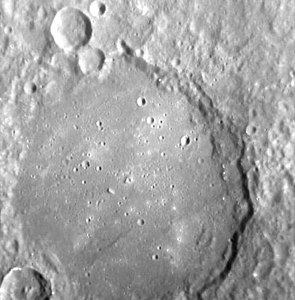
Unkei was a Japanese sculptor of the Kei school, which flourished in the Kamakura period. He specialized in statues of the Buddha and other important Buddhist figures. Unkei's early works are fairly traditional, similar in style to pieces by his father, Kōkei. However, the sculptures he produced for the Tōdai-ji in Nara show a flair for realism different from anything Japan had seen before. Today, Unkei is the best known of the Kei artists, and many art historians consider him its "most distinguished member".

Kaikei (快慶) was a Japanese Busshi of Kamakura period, known alongside Unkei. Because many busshi of the school have a name including kei (慶), his school is called Kei-ha. Kaikei being also called Annami-dabutsu, his style is called Anna-miyō and is known to be intelligent, pictorial and delicate. Most of his works have a height of about three shaku, and there are many of his works in existence.
A busshi(仏師) is a Japanese term for Buddhist artists who specialized in painting or sculpting images for Buddhist temples, predominantly in the Nara period. Painters were specifically known as e-busshi (絵仏師), whereas sculptors who worked with wood were called ki-busshi. Busshi were organized into both categories of task and grade of mastery: sō-busshidai-busshi, gon-busshi, tō-busshi, and shō-busshi. These rank designations continued in use until the Heian period.

Sculpture in Japan began with the clay figure. Towards the end of the long Neolithic Jōmon period, some pottery vessels were "flame-rimmed" with extensions to the rim that can only be called sculptural, and very stylized pottery dogū figures were produced, many with the characteristic "snow-goggle" eyes. During the Kofun period of the 3rd to 6th century CE, haniwa terracotta figures of humans and animals in a simplistic style were erected outside important tombs. The arrival of Buddhism in the 6th century brought with it sophisticated traditions in sculpture, Chinese styles mediated via Korea. The 7th-century Hōryū-ji and its contents have survived more intact than any East Asian Buddhist temple of its date, with works including a Shaka Trinity of 623 in bronze, showing the historical Buddha flanked by two bodhisattvas and also the Guardian Kings of the Four Directions.
Ten Nights of Dreams or Ten Nights' Dreams is a series of short pieces by Natsume Sōseki. It was published in the Asahi Shimbun from July 25 to August 5, 1908.

Kōkei was a Japanese sculptor of the Kamakura period. He headed the Kei school during the reconstructions of Tōdai-ji and Kōfuku-ji. Although his works are still largely in the style established by Jōchō in the Heian period, Kōkei's sculpture show a move toward the greater realism that characterizes the works of his disciples Unkei, Kaikei, and Jōkei.

Jōkei (定慶) was a Japanese sculptor of the Kei school, which flourished in the Kamakura period. Aside from his artwork, Jōkei left little record of his life, so sorting out the details of his biography is difficult. The fact that two men by that name were working in Nara in the 13th century only complicates matters.

Buddhism played an important role in the development of Japanese art between the 6th and the 16th centuries. Buddhist art and Buddhist religious thought came to Japan from China through Korea. Buddhist art was encouraged by Crown Prince Shōtoku in the Suiko period in the sixth century, and by Emperor Shōmu in the Nara period in the eighth century. In the early Heian period, Buddhist art and architecture greatly influenced the traditional Shinto arts, and Buddhist painting became fashionable among wealthy Japanese. The Kamakura period saw a flowering of Japanese Buddhist sculpture, whose origins are in the works of Heian period sculptor Jōchō. During this period, outstanding busshi appeared one after another in the Kei school, and Unkei, Kaikei, and Tankei were especially famous. The Amida sect of Buddhism provided the basis for many popular artworks. Buddhist art became popular among the masses via scroll paintings, paintings used in worship and paintings of Buddhas, saint's lives, hells and other religious themes. Under the Zen sect of Buddhism, portraiture of priests such as Bodhidharma became popular as well as scroll calligraphy and sumi-e brush painting.
The decade of the 1200s in art involved some significant events.
The decade of the 1220s in art involved some significant events.
The decade of the 1210s in art involved some significant events.
The decade of the 1180s in art involved some significant events.
The decade of the 1150s in art involved some significant events.
The decade of the 1170s in art involved some significant events.
The decade of the 1190s in art involved some significant events.
The Kei school was a Japanese school (style) of Buddhist sculpture which emerged in the early Kamakura period. Based in Nara, it was the dominant school in Buddhist sculpture in Japan into the 14th century, and remained influential until the 19th. Art historian Joan Stanley Baker cites the Kei school's early works as the last highpoint in the history of Japanese sculpture.

Enjō-ji (円成寺) is a Shingon temple in the northeast of Nara, Japan. A number of its buildings and images have been designated National Treasures and Important Cultural Properties, and its late-Heian period gardens are a Place of Scenic Beauty.
The seated wooden statue of Dainichi Nyorai at the Shingon temple of Enjō-ji in Nara is the earliest and best-substantiated work by Japanese master sculptor Unkei. An inscription on the pedestal records that he began work on the piece in 1175 and brought it to completion the following year. The sculpture has been designated a National Treasure. Unkei's next documented works, from the early 1180s, were commissioned by military leaders prominent in the ensuing Kamakura shogunate, for temples in eastern Japan. These works are physically more massive and powerful, as are his giant Niō at Tōdai-ji. By contrast, in this early work Unkei employed a more "gentle" or "tranquil" style.

Chekhov is a crater on Mercury. It has a diameter of 194 kilometers. Its name was adopted by the International Astronomical Union (IAU) in 1976. Chekhov is named for the Russian author Anton Chekhov, who lived from 1860 to 1904.

Ganjōju-in (願成就院) is a Buddhist temple of the Kōyasan Shingon-shū sect in the Hike neighborhood of the city of Izunokuni, Shizuoka Prefecture, Japan. Its main image is a statue of Amida Nyōrai. The temple grounds were designated a National Historic Site on February 14, 1973. The temple is noted for a set of statues by the famed Kamakura period sculptor Unkei which are collectively designated a National Treasure of Japan.











